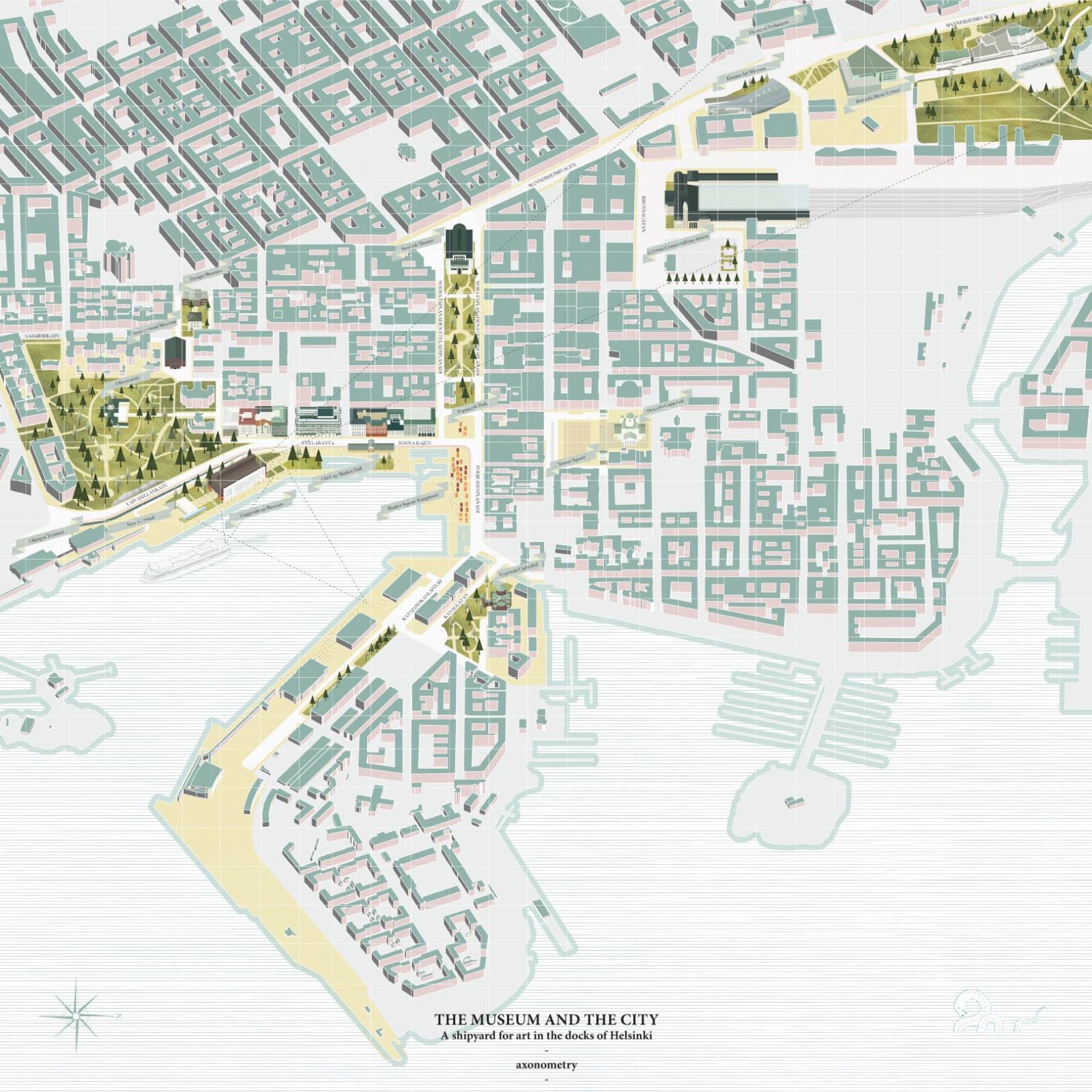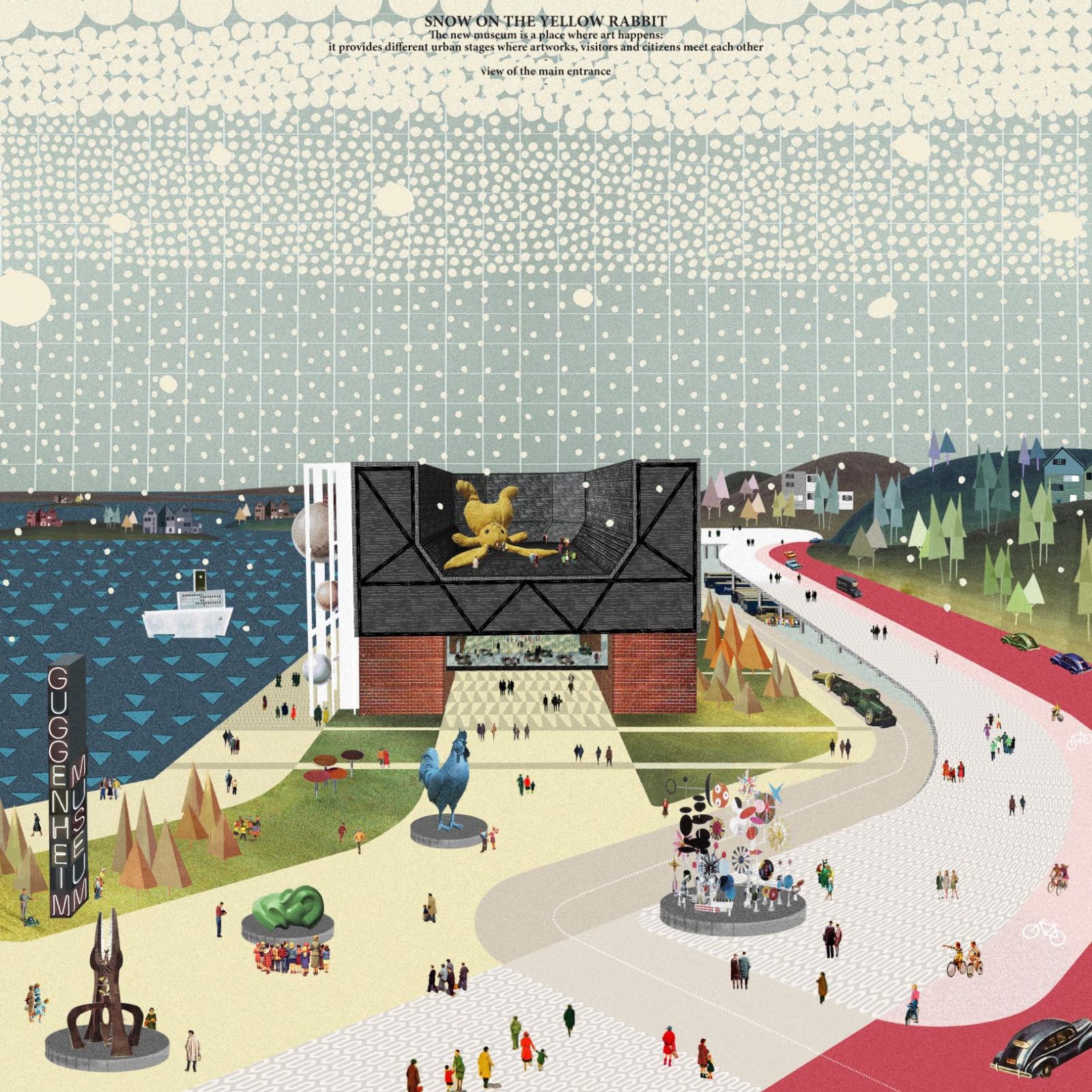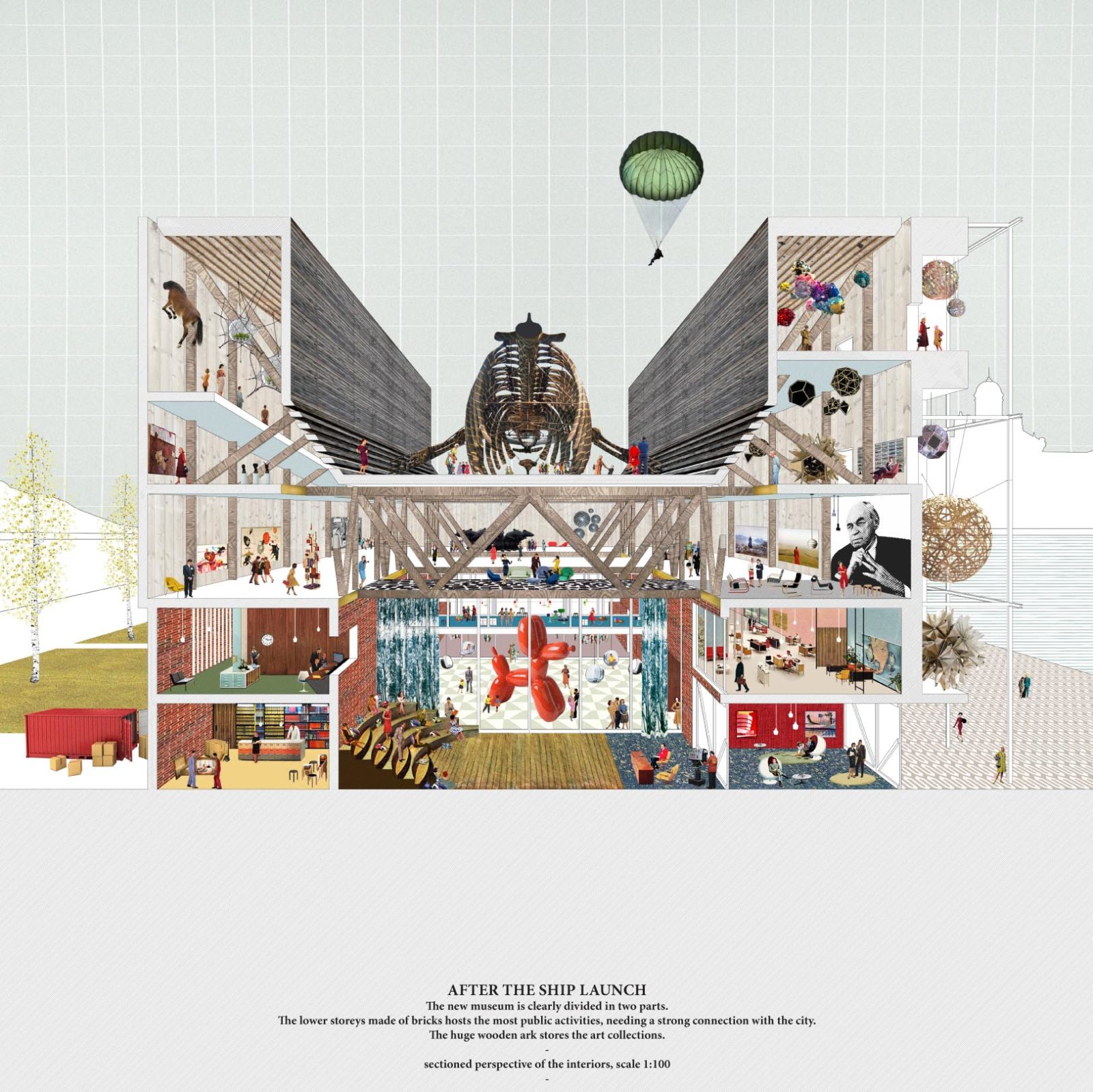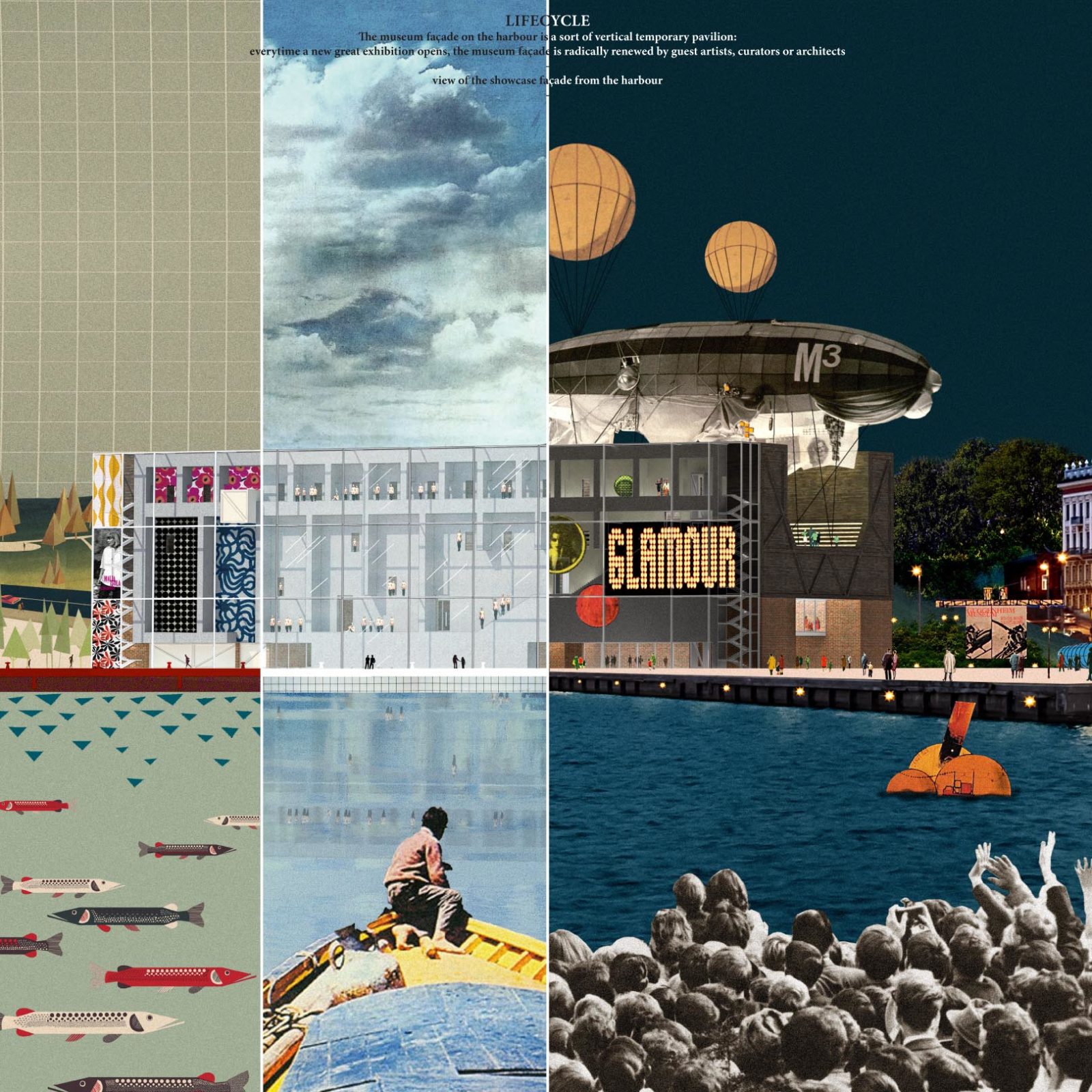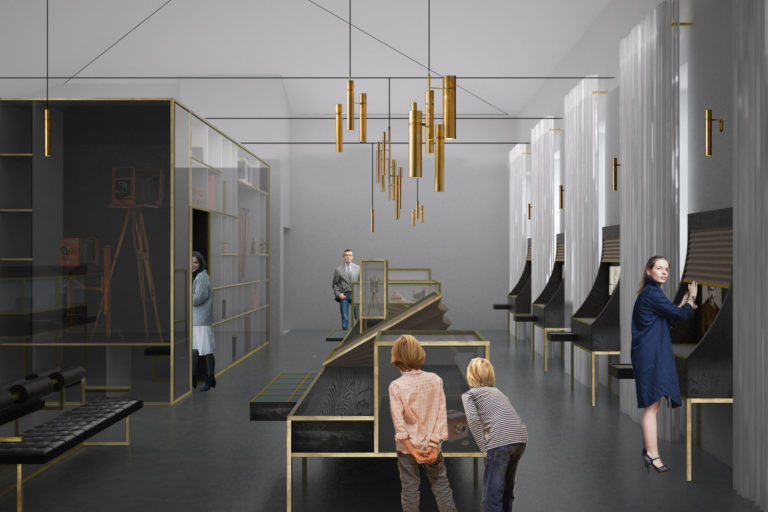Guggenheim Helsinki
In order to achieve a result and to appraise the site, the prominence of architecture in the project demands from the beginning an operative policy which is able to measure the technical realizations with the need to protect the uses and the value of the landscape in the prominent waterfront site reserved by the City of Helsinki for the proposed museum. Inside of this frame, the research on sustainable solutions acquires even more relevance, both in terms of use/management and impact/valorization of the existing situation. Interpreting the competition brief, the project focuses on the enhancement of the qualities of the historic city, which are expressed from the intervention area and as condensed into it. At the same time the project highlights an utterly manifest urban centrality, whose meaning originates from the specific nature of the historic city and which might be able to interrelate a new offer of cultural activities with the economic possibilities linked to the development of the commercial and touristic sectors. Embracing the entire site (Eteläsatama, or South Harbor area, an urban space close to the historic city center and immediately visible to visitors arriving by sea), the nature and the form of the proposed structures are configurated like a part of a vast cityscape. However, inside of this complexity, the range of the project materials is limited and essential. Fundamentally, wood, bricks and steel compose the forms of the project in elevation. An outer landscape captured by the texture of the structures counterbalances an inner landscape composed by the pedestrian surfaces offering civic space where both residents and visitors can gather.

The project imagines a museum building generated by elementary forms, induced by the city alignments. In plan, the used shapes are the rectangle, and the longitudinal segment of the metal arcade, which relates to and composes the part facing the harbor. In general, the project is searching for a system of architectural elements in relation with the natural ones. A system which is motivated by the specific purposes of the ideas competition, aimed at the environmental, urban and architectural renewal of the area. A system which is at the same time respecting the current nature of the city and of his landscape, so intimately linked to the meaning of the public space and to the richness of uses of the site.
Such composed building should assume an active role in city-making. Therefore, one of the essential features of the museum designed for the city is his size and, accordingly, his essence as powerful mean of producing and reading space. His role does not consist in the exceptionality of his nature, but more in being an effective tool of explanation of the space, in other words in reducing the space to a structure of manifest relations.

It is possible to assert that the need to preserve the richness of the urban system is among the primary objectives of the project, without abandoning a simple definition of the volumes and a relation of the masses with similar objects which are already present in the area. The building we propose is willing to integrate itself organically in the existing context, using materials and technologies which are compatible with local traditions.
From the very beginning, the design process has been undertaken in the firm belief that the building should reduce to a minimum all the limitations which preclude a full and safe use of the spaces. All of their parts are always accessible and devoid of physical barriers.

The great “U” section of the top, similar to an ancient wooden floating dock, contains the roof-plaza, an outdoor space for the display of sculptures and projects. The two wings of the main building are used to stage the temporary exhibitions. The great central place, in which is the entrance, supports social interaction and the complete experience of art, incorporating galleries, a flexible performance hall, educational space, a large café/bar and a smaller formal restaurant, administrative offices, practitioner spaces, collections storage, a retail store, and other facilities.
Above all, the project take into account the tradition of his historical place, and complies with all safety and facility requirements as set out for such sites. At the same time, the new museum might also became a new landmark and a symbol for the city.
Location: Helsinki, Finland
Year: 2014
With: Valter Scelsi, Francesco Librizzi Studio, Raffaella Parodi, Maria Cunico

